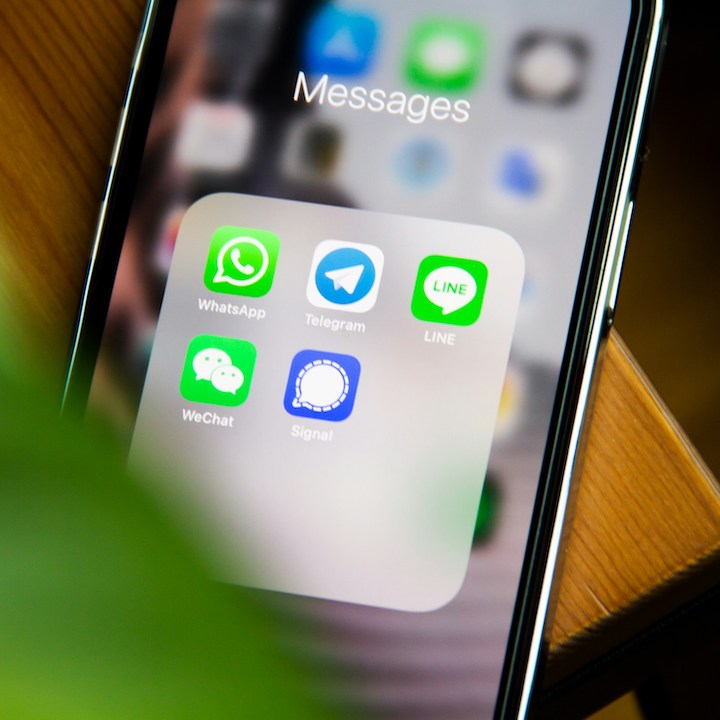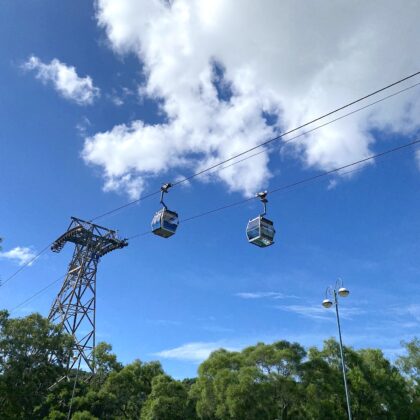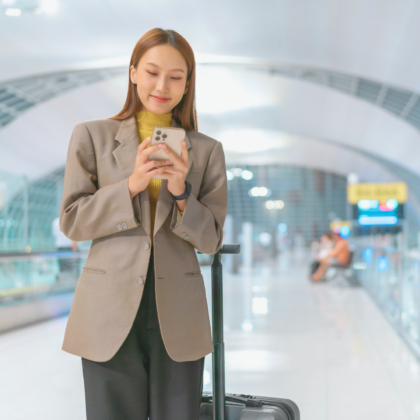I almost had a mental breakdown at the Shanghai Airport but as always, we’re looking out for you and laying out important things to know before travelling to the Mainland…
With the border just about 15 minutes away thanks to the High Speed Rail and the new five-year travel permit for Hong Kong permanent residents, travelling to China is seemingly simpler and easier, that is until you set foot on the Mainland at least! From sorting out your visas (by lining up at 7:30am!) and permits, to downloading the Mainland Uber alternative DiDi and making sure you’re still connected to your social media world (unless you want to unplug, voluntarily or not!) – here are all the top China travel tips and things we wish people told us before travelling to China.
Read More: Everything To Know About The High-Speed Rail Overnight Sleeper Trains

Things To Know Before Travelling To Mainland China
Cities like Shenzhen and Guangzhou have always been popular amongst the older crowds, but post-COVID, the younger generation have taken a particular interest in these neighbouring Mainland cities for cheaper food, spas, shopping malls and more. Travelling a little further into Shanghai and Beijing or lesser-known paths filled with natural beauty is also back in the cards. Below, we mention certain apps to download for getting around China, just be sure to download them before your trip as Google Play Store doesn’t work there – and we like to go prepared!
Visas And Travel Permits To Enter China
No, you can’t simply flaunt your HKID and enter China as you do with Macau. This is quite a chunky but important one so read carefully. Below are the legitimate ways to enter China:
Mainland Tourist Visa
Fill in the form online, print out the completed form and bring that alongside required documents (employment proof, bank statements, photocopies of HKID, etc), passport and passport-sized photo (following the requirements of Chinese visa) to the China Visa Application Service Center – also bring cash for the visa fees. Alternatively, you could opt to do this via travel agents; it would save you plenty of time but will cost you double the price.
If you’re applying for a visa during non-peak season, the in-person visa application takes roughly an hour and during peak time it can take anywhere from 5 to 7 hours. The visa centre opens at 9am but people tend to start queuing from 7:30am – there’s no AC until around 8:30am so if you plan on being the early bird to get the worm, bring a portable fan and chair!
I myself joined the line at around 8:30am and at about 8:45am, they let everyone in to sit and continue to “queue up” (in the AC!) – the whole process took me an hour but would’ve been shorter if I didn’t have to take new passport-sized photos to be in-line with the requirements (there are photo booths there which only accept cash).

China Travel Permit For Hong Kong Permanent Residents
Alright, now you can flaunt your HKIDs (to apply for the card)! Previously, only Hong Kong passport holders could get a hold of the China travel permit but as of very recently, non-Chinese residents can obtain one too (as long as you are a permanent resident). Starting 10 July, HKID holders can apply for the travel permit which allows entry for 5 years with a maximum of 90 days per stay. This also means you will no longer need to bring along your passport or provide a fingerprint verification and customs declaration card upon arrival – simply bring your travel permit card!
How To Apply For The China Travel Permit
Complete the travel permit form, print it out and bring along your HKID, passport and a recent photo to one of the CTS Entry Permit Service Centres. Application fees cost $260, you’ll receive your permit in about 20 days (to be collected in-person). Do note that the centres are going to be very busy during the start of this new scheme, if you ask us, we’re planning on waiting a while to apply to avoid any long lines!
CTS Entry Permit Service Centres:
- Central: 1/F, CTS House, 78-83 Connaught Road, Central, Hong Kong
- Mong Kok: 2/F, Tak Bo Building, 62-72 Sai Yee Street, Mong kok, Kowloon, Hong Kong
- Kowloon Bay: Room 202, Enterprise Square Tower 1, 9 Sheung Yuet Road, Kowloon, Hong Kong
- Tsuen Wan: G/F, 189 Castle Peak Road, Tsuen Wan, New Territories, Hong Kong
- Sha Tin: Unit B, G/F, Shatin Fun City, 7 Lek Yuen Street, Sha Tin, New Territories, Hong Kong
- Tuen Mun: Shop A, 1/F, Kar Wah Building, 11-17 Castle Peak Road, San Hui, New Territories, Hong Kong

APEC Business Travel Card (ABTC)
If you have an APEC card with approved entry to China, simply bring your card and passport along and you’re good to enter – you may just be questioned about where you’re staying and how long you’re staying for at the Mainland immigration.
Special Entries To China
Until 30 November 2024, travellers from France, Germany, Italy, Netherlands, Spain and Malaysia will be able to enter the Chinese Mainland visa-free for up to 15 days for business, tourism, family visit and transit purposes.
Read More: Your Guide To Macau – What To Eat, See & Do
Getting Through Immigration In China
Alright, visas and permits sorted, now to enter the Mainland. Whether you’re arriving via train, plane or even ferry (it’s right next to Macau ferry, guys), you’ll need to pass immigration. If you hold a visa or APEC card, you’ll need to undergo fingerprint verification and complete a travel card upon arrival at airports. When I arrived at Shanghai airport, there were no other foreigners so getting through didn’t take long, but lines will be longer for entering Shenzhen and Guangzhou (roughly 30 minutes, up to an hour).
The travel permit card works similarly to how you pass immigration at the Hong Kong airport with your HKID, simply scan it using a machine to pass through – simple and easy!

Payment Methods In China
Let’s address the elephant(s) in the room, WeChat and Alipay! China is mostly cashless, taxi drivers, restaurants, street vendors and public transport refrain from accepting cash (but we found a lot of cafes only accepted cash!). Download WeChat or Alipay beforehand in Hong Kong – for us personally, WeChat did not work (if your account had been inactive for a long time, you’ll be blocked and we simply couldn’t find a way to get unblocked) but Alipay did and thank God for that. And don’t worry, your Hong Kong AliPay will work in China even if you link your Hong Kong credit card.
Do also carry some cash with you just in case, and if cash is the only option you have left, it’s illegal in China for people to refuse cash!
Read More: 8 Direct Flight Destinations From Hong Kong You Might Not Have Thought Of

Bye Bye Google Maps – Navigating Around China & Useful Apps
Google Maps is our go-to for navigating any city we travel to, but sadly, Google is blocked in China. But good news for Apple users, Apple Maps still works and is actually quite reliable for restaurant and attraction reviews and more accurately shows travel time from one point to another. You can also try using the Chinese counterparts Baidu Maps and Gaode Maps if you know Chinese.
But there is a loop hole, you can access Google Maps, WhatsApp, Instagram and so on if you buy a SIM with data roaming in China, but this SIM has to be purchased in Hong Kong (plenty of mobile data plans come with data roaming in China) – we definitely recommend this especially if it’s your first time setting foot on the Mainland.
Another newsflash, there’s no Uber in China and while local taxis are great, you’ll need to show the Chinese address and also the fares are slightly pricier. DiDi is your answer here – works like a charm but comes with a bug, your first journey won’t be accepted if you use an international credit card, this is where we had a mental breakdown at the airport. You can contact the support team and they’ll sort this out in a couple hours, but until then you’ll have to resort to public transport and taxis. On the other hand, if you have WeChat Pay, use it to your advantage and link to DiDi for smooth sailing.
Read More: Your Guide To Essential Hong Kong Apps And Numbers

Will Your Duolingo Mandarin Suffice?
If your Mandarin skills go as far as nǐ hǎo and xièxie (let’s be real, you should at least know these!), you can still show your politeness to locals but it won’t be enough to get around. It’s always great to pick up a few extra useful phrases, but apps like Pleco and Baidu Translate can also come to your rescue for accurate translations. The locals are all generally friendly and make conversation with you to get to know you and are patient enough to listen to your broken Mandarin!
Read More: Learn Chinese In Hong Kong – Mandarin & Cantonese Tutors And Courses
Adapt! Your Hong Kong Plugs Won’t Work There
We made the mistake of forgetting to carry our international adapter but the hotels were nice enough to lend us some. China uses plug types types A, C and I so your Hong Kong plugs won’t work.
Does VPN Work In China?
Yes and no. Though not illegal, it is heavily restricted so many public Wifis may have disabled VPN. So again, we strongly recommend getting data roaming!

Travel Within Chinese Cities Via High Speed Rail
If you’re travelling from one city to another within China, we found the High Speed Rail super comfortable (even for second class), affordable and reliable. We used Trip.com to purchase the tickets and found no issues. Do note the train stations can be huge and they do baggage checks so get to your train stations early (we would’ve missed ours if we were a couple minutes late!).
One last point, wear comfortable shoes and be prepared to walk!
Read More: Hong Kong Airport Lounge Experiences That Offer The First-Class Life
Main image courtesy of Anna Tarazevich via Pexels, image 1 courtesy of Paulo Marcelo Martins via Pexels, image 2 courtesy of Peter Lopez via Pexels, image 3 courtesy of Saunak Shah via Pexels, image 4 courtesy of Adem AY via Unsplash, image 5 courtesy of Getty, image 6 courtesy of jiawei cui via Pexels, image 7 courtesy of zhang kaiyv via Pexels.




 Eat & Drink
Eat & Drink



 Travel
Travel



 Style
Style



 Beauty
Beauty



 Health & Wellness
Health & Wellness



 Home & Decor
Home & Decor



 Lifestyle
Lifestyle



 Weddings
Weddings







